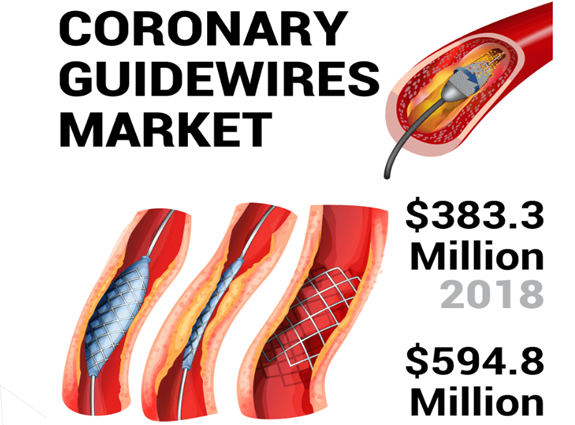Coronary Guidewires: The Essential Tool for Interventional Cardiology
As interventional cardiology continues to evolve, so do the technology and tools that are utilized for various procedures. One such tool that has become an essential part of interventional cardiology is the coronary guidewire. Coronary guidewires are thin, flexible wires that are inserted into the coronary artery to guide other medical devices such as stents and balloons during percutaneous coronary intervention (PCI) procedures. In this article, we will discuss the anatomy of coronary guidewires, their types, their uses, and the benefits of using them in interventional cardiology.
Anatomy of Coronary Guidewires
Coronary guidewires are made of a thin, flexible core wire covered with a polymer coating. The polymer coating allows the guidewire to slide smoothly through the arteries while minimizing any potential damage to the vessel walls. The distal end of the guidewire features a tip that can be shaped into various configurations such as straight, J, or floppy to facilitate navigation through tortuous arteries. The proximal end of the guidewire is attached to a handle, which allows the operator to manipulate the guidewire during the procedure.
Types of Coronary Guidewires
There are several types of coronary guidewires available for interventional cardiology procedures. The most common types of coronary guidewires include:
- Bare-Metal Guidewires
Bare-metal guidewires are made of a single, uncoated wire that is flexible and easy to manipulate. They are typically used for simple procedures and for navigating through relatively straight arteries.
- Coated Guidewires
Coated guidewires are covered with a hydrophilic or hydrophobic coating that allows them to slide easily through the arteries. They are often used for more complex procedures and for navigating through tortuous arteries.
- Hydrophilic Guidewires
Hydrophilic guidewires are coated with a hydrophilic polymer that attracts water molecules, allowing them to slide easily through the arteries. They are often used for procedures that require the guidewire to cross a lesion or blockage.
- Specialty Guidewires
Specialty guidewires are designed for specific procedures and may have unique shapes or coatings. For example, microcatheter guidewires are used for procedures that require the use of a microcatheter, while stiff guidewires are used for procedures that require more support.
Uses of Coronary Guidewires
Coronary guidewires are used in a variety of interventional cardiology procedures, including:
- Percutaneous Coronary Intervention (PCI)
During a PCI procedure, a coronary guidewire is used to navigate through the coronary artery to the site of the blockage or lesion. Once the guidewire is in place, a balloon catheter is advanced over the guidewire to the site of the blockage. The balloon is then inflated, which compresses the plaque against the artery wall, widening the artery and restoring blood flow.
- Coronary Angioplasty
Coronary angioplasty is a procedure that uses a balloon catheter to widen a narrowed or blocked artery. A coronary guidewire is used to navigate through the artery to the site of the blockage. Once the guidewire is in place, a balloon catheter is advanced over the guidewire to the site of the blockage. The balloon is then inflated, which compresses the plaque against the artery wall, widening the artery and restoring blood flow.
- Coronary Stenting
During a coronary stenting procedure, a coronary guidewire is used to navigate through the artery to the site of the blockage.
Advantages of coronary guidewires
Coronary guidewires offer several advantages over traditional surgical approaches to CAD, including:
- Minimally invasive
Coronary guidewires are inserted through a small incision in the skin, reducing the risk of infection and complications compared to traditional open-heart surgery.
- Shorter recovery time
Because coronary guidewire procedures are minimally invasive, patients typically recover more quickly than they would with open-heart surgery.
- Less scarring
Coronary guidewire procedures leave only a small scar at the incision site, whereas open-heart surgery can leave a large, visible scar.
Conclusion
Coronary guidewires are an essential tool in the management of CAD. They allow doctors to diagnose and treat the condition with minimal invasiveness and maximum precision.


